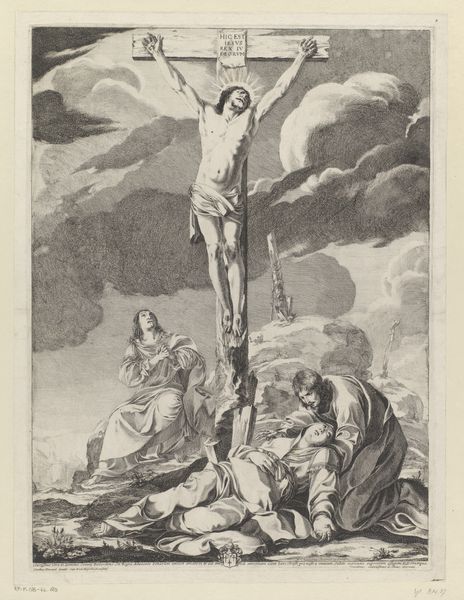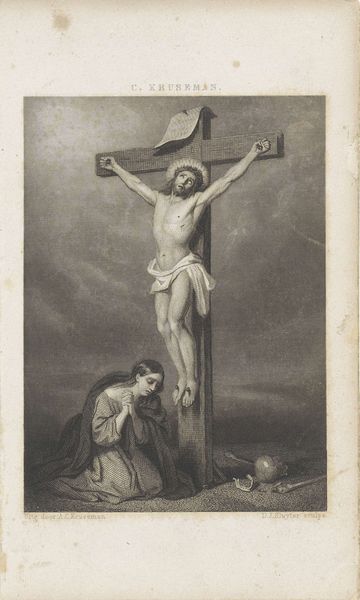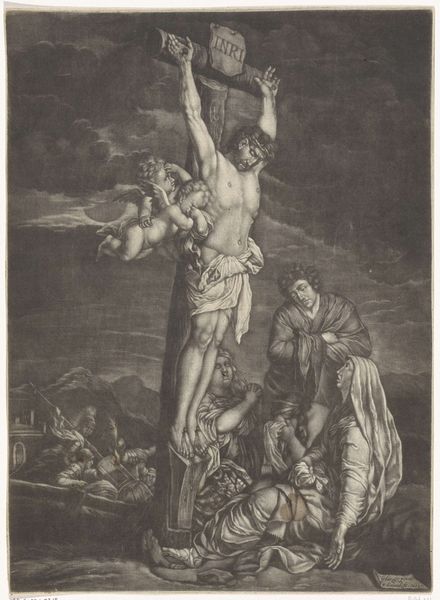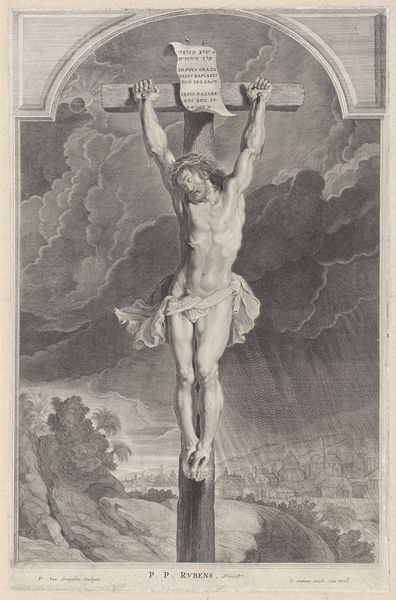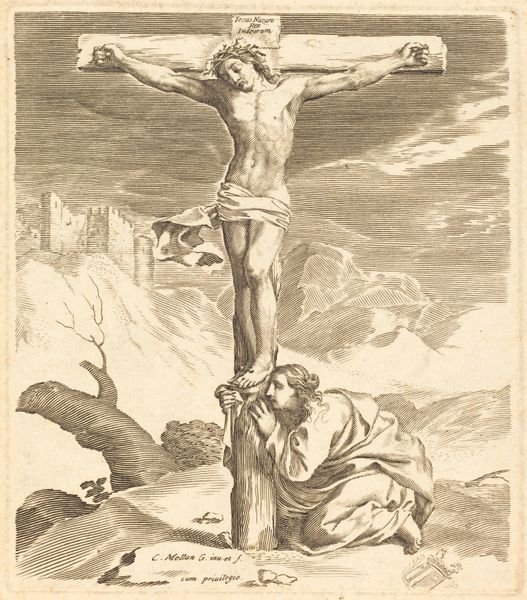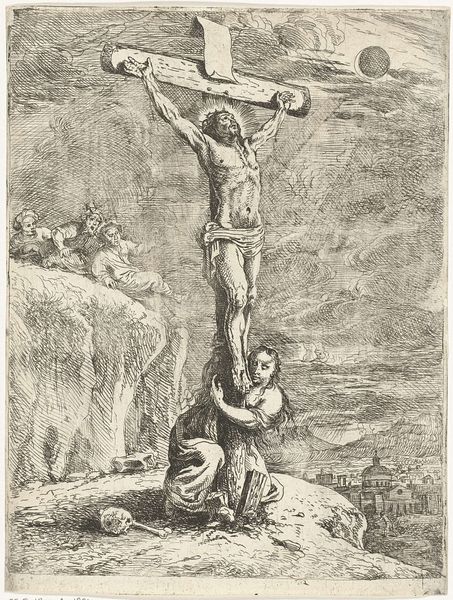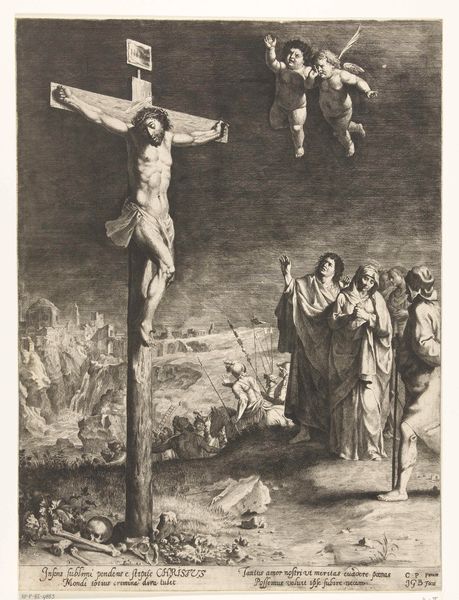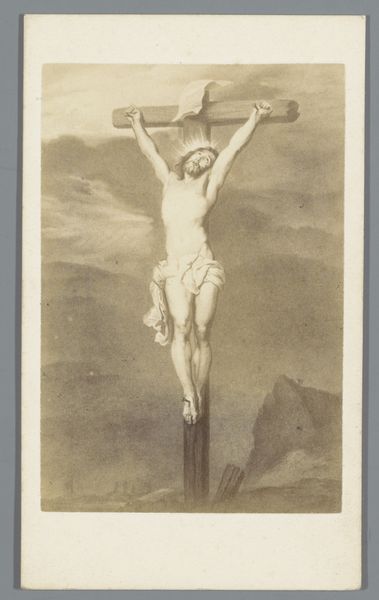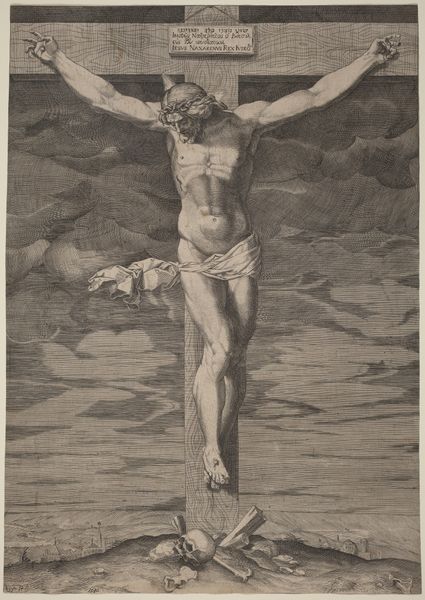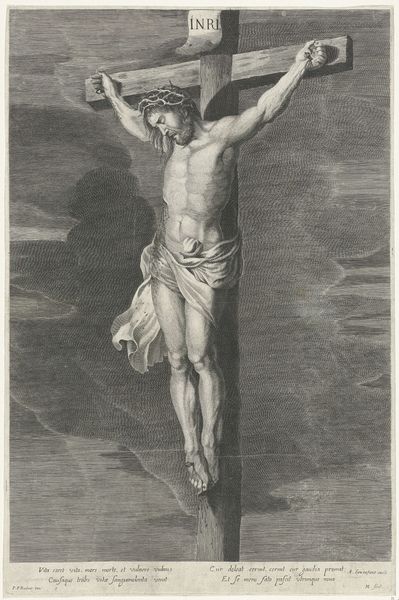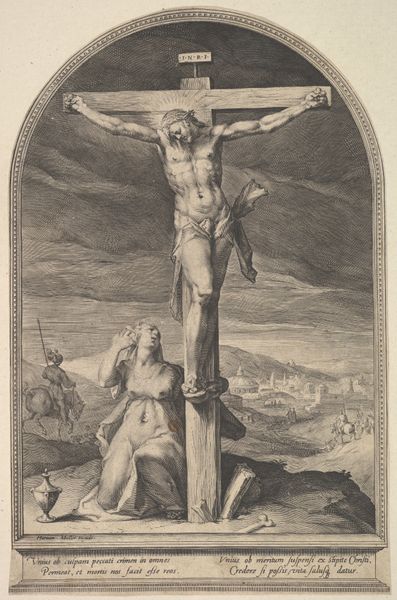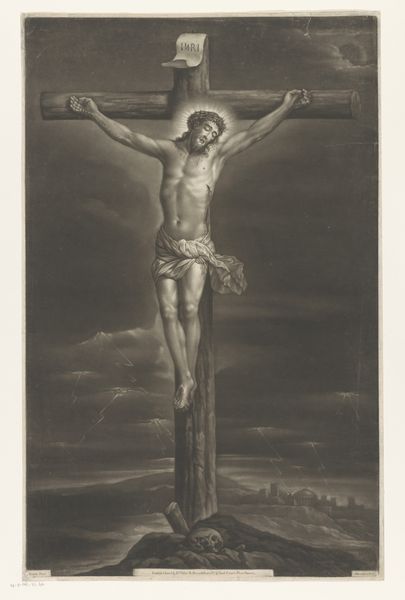
Fotoreproductie van het schilderij 'De heilige Franciscus aan de voet van het kruis' door Anthony van Dyck 1893 - 1912
0:00
0:00
Dimensions: height 146 mm, width 99 mm
Copyright: Rijks Museum: Open Domain
Editor: This drawing, a reproduction after Anthony van Dyck's 'Saint Francis at the Foot of the Cross,' rendered in pencil and charcoal sometime between 1893 and 1912… it's incredibly somber. The muted tones and the stark contrast between the figures… what do you see when you look at it? Curator: I see an incredibly potent image, charged with layers of meaning. The figure of Saint Francis, gazing upward, clinging to the base of the cross – it speaks volumes about faith, suffering, and the empathetic human connection with divinity. Van Dyck masterfully uses the cross not just as an instrument of death but as a visual conduit, an axis mundi, between earthly pain and the promise of transcendence. Editor: Axis mundi? Curator: Yes, the world’s axis. In many cultures, key symbols function as a point of connection between the earth and the heavens, reminding us that sacred places enable spiritual transformation. Notice how the artist positions Saint Francis – he embodies humility and devotion, doesn't he? Consider, also, the historical context of baroque art – the theatricality, the emotional intensity. How does this drawing amplify or diminish those baroque sensibilities for you? Editor: I guess it's there in Saint Francis's reaching out. So much emotion there, and such a specific cultural story being retold through these images, even in reproduction. It's incredible how symbols persist and continue to resonate across time. I hadn’t thought of it as an axis between worlds before. Curator: Exactly! Each line, each shadow, echoes centuries of art and belief. Seeing it reproduced invites another layer of appreciation: for its lasting power. Editor: I’ll definitely be looking at religious art differently from now on. Thank you!
Comments
No comments
Be the first to comment and join the conversation on the ultimate creative platform.
